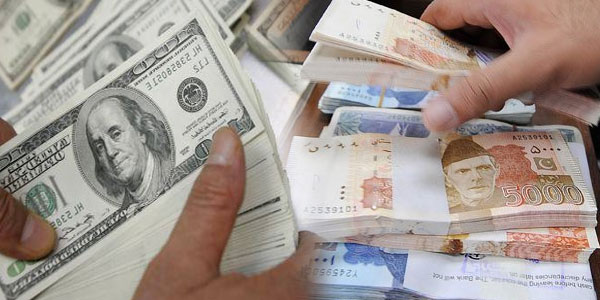KARACHI: As the dust settles after the pandemonium of rupee’s devaluation, wholesalers who already had paid in advance before the depreciation occurred, took advantage of the opportunity to earn an additional 5 percent on their imports.
Dollar closed at 110.20-110.50 on Friday in the inter-bank market, reported Dawn. State Bank of Pakistan last Friday decided to let the rupee depreciate against the US dollar, which saw the currency tumbling 4.7 percent during the ongoing week.
Also, Prime Minister Shahid Khaqan Abbasi on Friday told Bloomberg the government has no plans to further devalue the rupee. He added that a weaker rupee will not have a huge impact on the economy and is expected to have an inflationary impact of 0.5 per cent.
Abbasi said the “markets will decide” the rupee’s level and that the move will help address Pakistan’s deteriorating external position.
Currency traders said SBP brought imported dollars in the open market and they export currencies besides the US dollar to Dubai and bring back dollars in its place. Importers retained their imported stocks due to appreciation of the dollar against the rupee.
Forex Association of Pakistan, President Malik Bostan said dollar availability was in abundance in open market and its demand on Friday didn’t cross 50 percent compared to two days back.
He shared currency traders were depositing half of the dollar amount in open market in banks, which indicated low demand. Rupee’s depreciation pinched importers as imported products prices increased 5 percent.
Rupee’s depreciation created headaches for importers like Anis Majeed who said “We have to make payments at the rate on the day that the imported products land in the country. Landed costs automatically increased, but we cannot pass on the hike to retailers with immediate effect.”
Majeed believes dollar’s appreciation won’t bring down imports and people will purchase same products at 5 percent higher prices. He added, exporters may gain an advantage for time being, as buyers would make price changes in lieu of shifts in exchange rate.
But in a statement to Voice of America, Zafar Moti, the former chief and CEO of the Pakistan Stock Exchange, said the government’s stance that exports would grow as a result of the devaluation was a “false argument.” Exports are “very low” to start with, inflation has grown from 4 percent to 6 percent, and with the announcement of devaluation, “the foreign debt has risen by $300 million,” he said.
Moti predicted that in the current climate of political instability, if the IMF devalued the rupee by 10 to 15 percent, “the results will be catastrophic.”





I believe the PKR devaluation will increase more poverty in Pakistan where buying capacity will be reduced.
If Pakistan Rupee value is decreasing then how purchasing power of audience is increasing day by day?
The Pakistani value decreasing can also affect our import-export business I personally export the best perfumes Internationally.